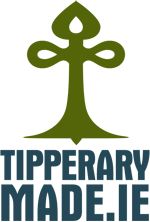
1800s Traveller Caravan on Display at Cashel Folk Village | Season 4 – Episode 68
Wheels Sep 10, 2024
Until the late 1970s Irish traveller caravans (wagons) were once a common sight on the side roads of Ireland. What is believed to be the very last original horse-drawn caravan, built in the late 1800s and once belonging to the Delaney family is to be found in the collection of the Cashel Folk Village in the town of the same name in County Tipperary.
The Walking People
Irish Travellers, known in Irish as “an lucht siúil” (meaning “the walking people”), are a traditionally nomadic indigenous group from Ireland. A 2017 DNA study confirmed their Irish origins with no genetic links to European Roma.
Bernard Minogue
During a visit to Cashel Folk Village in County Tipperary, curator Bernard Minogue, whose family has ties to the Rock of Cashel for three centuries, guided us through his collection.
Bernard’s father, grandfather, grand uncle and great-grandfather, commencing in the late 1800s were the very first and the very last sole caretakers of the Rock of Cashel. The current chief guide on the rock who has been in charge of the site for many years is a first cousin of Bernard and her son, sister and brother-in-law also work on the rock keeping the family connections alive.
Cashel Folk Village
In 1984 the Cashel Folk Village, located just two hundred meters away from the world-famous Rock of Cashel was established by Bernard’s father-in-law, the well-known historian and Irish history author Martin O’Dwyer (Bob). The site of the museum goes back over three hundred years and was the original birthplace of Fr. John Lanigan the priest who wrote the first ecclesiastical history of Ireland back in the late 1700s. In more recent times the buildings were the location for the Tivoli Movie Hall, a slaughter yard and right up to today as Cashel Folk Village.
Horse-Drawn Caravan
Taking pride of place in the museum yard is a traditional traveller caravan, which housed a family of sixteen until the late ‘80s. Bernard shared its unique history with us.
What makes this caravan unique is that it’s the last original of its kind, still used daily by an Irish Traveller family until 1986. Built in the late 1800s, it stands apart from the many replicas around today. While the traditional crafts of basket making and tin smithing, are associated with travellers, they usually did not build their own caravans.
Fourteen children plus the parents lived in this caravan. The family of eleven boys, three girls and their parents. Sleeping arrangements had the parents on the top bed, young babies underneath them in pull out drawers, bunks on the left and right. The remainder of the children slept outside on two wooden pallets on the ground, with blankets on top and in Bernard’s own words, “then a big green sheet-tarpaulin pulled from the back and up, over to keep everybody in out of the elements”.
Law Change
According to Bernard, the family were called the Delany’s who are now living in settled accommodation just outside the town of Cashel. The reason it was the last original caravan still in everyday use by a full travelling family was because in the mid-1970s there was a law change in Ireland whereby all children had to register for school five days of the week.
This new law brought about the settling of the Irish travellers and this caravan was then situated on the north-western side of the Rock of Cashel in a semi-permanent spot that left the family near enough to be able to walk to the school, without having to settle down. The Delaney’s lived there for twelve years, long after all the other traveller families in the area had settled. In 1986 the family decided to settle down and at that stage the Cashel Folk Village purchased the caravan from them.
Trivia
We love a bit of trivia, and Bernard showed us the original leather forge bellows from the 1981 epic medieval fantasy film Excalibur. Directed, co-written, and produced by County Wicklow resident John Boorman, the movie retells the legend of King Arthur and the Knights of the Round Table. These bellows were used on set to power the fire that forged Excalibur, King Arthur’s legendary sword!
In an upcoming episode we will be bringing you our story on the Brougham Carriage that is held in the collection of the Cashel Folk Village. Please support your local museum and plan your visit for this weekend.
Sources of Information and Photo Credits:
Antony Dixon
Irish Memory Blog
Jim Barton
PL Chadwick
If you have an idea for a story, please email Kevin Reid [email protected]
Our thanks to Bernard Minogue and the Cashel Folk Village
Tech Specs
- During our tour Bernard told us that the entire museum collection aside from a mere five single items are all originals. Highlights in the folk village include:
- • The Famine Museum/ Workhouse
- • Brougham Carriage
- • Blacksmiths Forge
- • The Penal Chapel/ Penal Laws
- • Travellers Caravan
- • The 1916 Memorial Plaza
- • The War of Independence/ Civil War Museum

